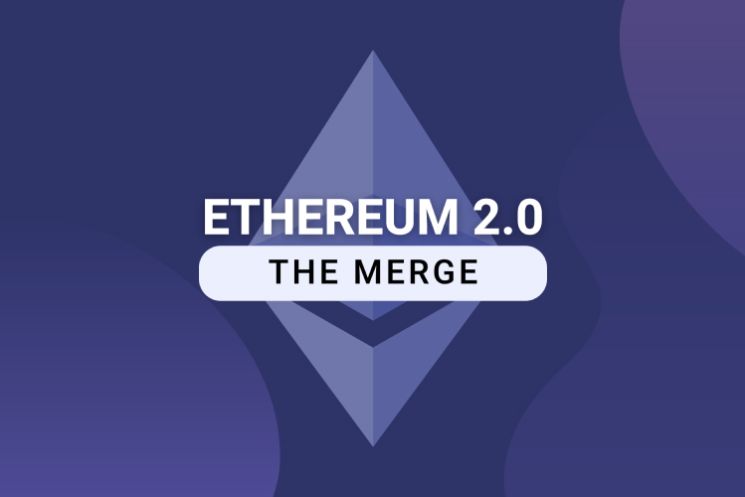Kraken Responds to Worried customers on the Just Concluded Merge
Amid the completion of the Ethereum merge, some users have begun to worry about when they will be able to unstake their previously staked Ethereum (ETH) tokens after the long-awaited Merge update of the ETH ecosystem occurred, which in return garnered a direct response from cryptocurrency exchange Kraken.
A straightforward clarification on Kraken’s role, Kraken’s Pro software enables customers to stake and unstake their assets. As the cryptocurrency exchange's support notified its users on September 15, it appears that ETH unstaking won't be available until the Ethereum network update that Shanghai has been scheduled to implement.
When posed with the question of whether one could be able to unstake their ETH, they responded by saying that unstaking of already staked ETH had been halted until the looming Shangai upgrade, which the Ethereum founders anticipate will take place within six to twelve months post the Merge.
The Ethereum Foundation anticipates the Shanghai upgrade to happen "6–12 months following The Merge," according to Kraken's support staff. The Merge, in the opinion of Kraken, is a significant turning point for the Ethereum community, and Kraken claims to work to promote this event in ways that benefit both its clients and its purpose.
Kraken believes the merger ticker will reflect the coin on the new PoS Ethereum chain. According to them, any freshly forked token(s) will go through the same rigorous vetting process that Kraken does before releasing any token for trade. However, they later stated that according to their policy, there is no assurance that any such tokens would be made accessible for trade.
They further articulated that the Merge was finished, and deposits and withdrawals for ETH and any Ethereum-based (ERC20) tokens may now be made again, according to a further update from Kraken.
They said that the distribution of ETHW trading to qualified clients had begun and was currently accessible. Additionally, Kraken stated that ETHW deposits and withdrawals would start on September 16 at around 15:30 UTC. They asserted that it was feasible for the ETHW token to fail to materialize and for its value to go to zero. The price of ETHW is quite volatile. Hence Kraken suggests that before trading the token, one should carefully consider the risks involved.
Previously before the merge, Kraken indicated that their study highlights the need to adopt a more sophisticated strategy when addressing the issue of whether ETH would experience deflation following the Merge.
Gary Gensler also speaks on the Merge
Chair SEC Gary Gensler suggested on Thursday that the Securities and Exchange Commission should examine the regulation of Ethereum more closely due to its switch from proof-of-work to proof-of-stake. After Ethereum's significant transition, Gensler made his remarks. When speaking with reporters during a Senate hearing, the SEC chair highlighted the Howey test, and the method regulators employ to evaluate an asset is security.
According to The Wall Street Journal, Gensler stated:
"From the coin's perspective, there's indication that under the Howey test, the investing public is anticipating gains based on the efforts of others."
He clarified that he wasn't talking to any particular cryptocurrency. Gensler attended the routine SEC oversight hearing before the Senate Banking Committee. He later said he thinks a cryptocurrency exchange that provides consumers with staking services "looks quite similar — with some adjustments of labeling — to lending."
How will Ethereum be issued post the Merge?
The pace at which ETH is issued will change now that the Merge brings a shift from PoW to PoS.
There are now two primary sources of ETH: mining prizes on the Eth PoW chain and validator awards on the Eth PoS chain since Ethereum PoW and PoS are currently running concurrently. After the Merge, only Ethereum PoS will be in use, which ends miner payouts. The sole method of issuance for Ethereum will continue to be validator awards.
Will this upgrade make Ethereum greener?
Ethereum is anticipated to decrease by more than 99%, from 8.5 GW to 85 MW. Crypto fans claim the merger resolves one of the most significant issues with cryptocurrency: its carbon footprint. According to estimates, mining Bitcoin uses as much energy as Argentina.
As they heavily rely on the Ethereum blockchain, NFTs are also expected to become greener. Under the proof-of-work system, one NFT transaction used to use 48kW, equivalent to an American household's daily energy use. According to estimates, the cryptocurrency used by Ethereum, consumed as much energy as Switzerland and emits as much carbon dioxide as Chile or Denmark.
Although Ethereum itself will be greener, Marc Taverner, founder, and CEO of the blockchain trade group INATBA, said it's unclear what would happen to the miners who are now stuck with pricey computer equipment.
According to Taverner, some owners of such rigs and data centers may have a financial incentive to direct their processing power toward other networks that still have a proof-of-work component. It already happened since the news started emerging about rising complexity in such networks as Ravencoin, Litecoin and Ethereum Classic.
 cryptonews.net
cryptonews.net
